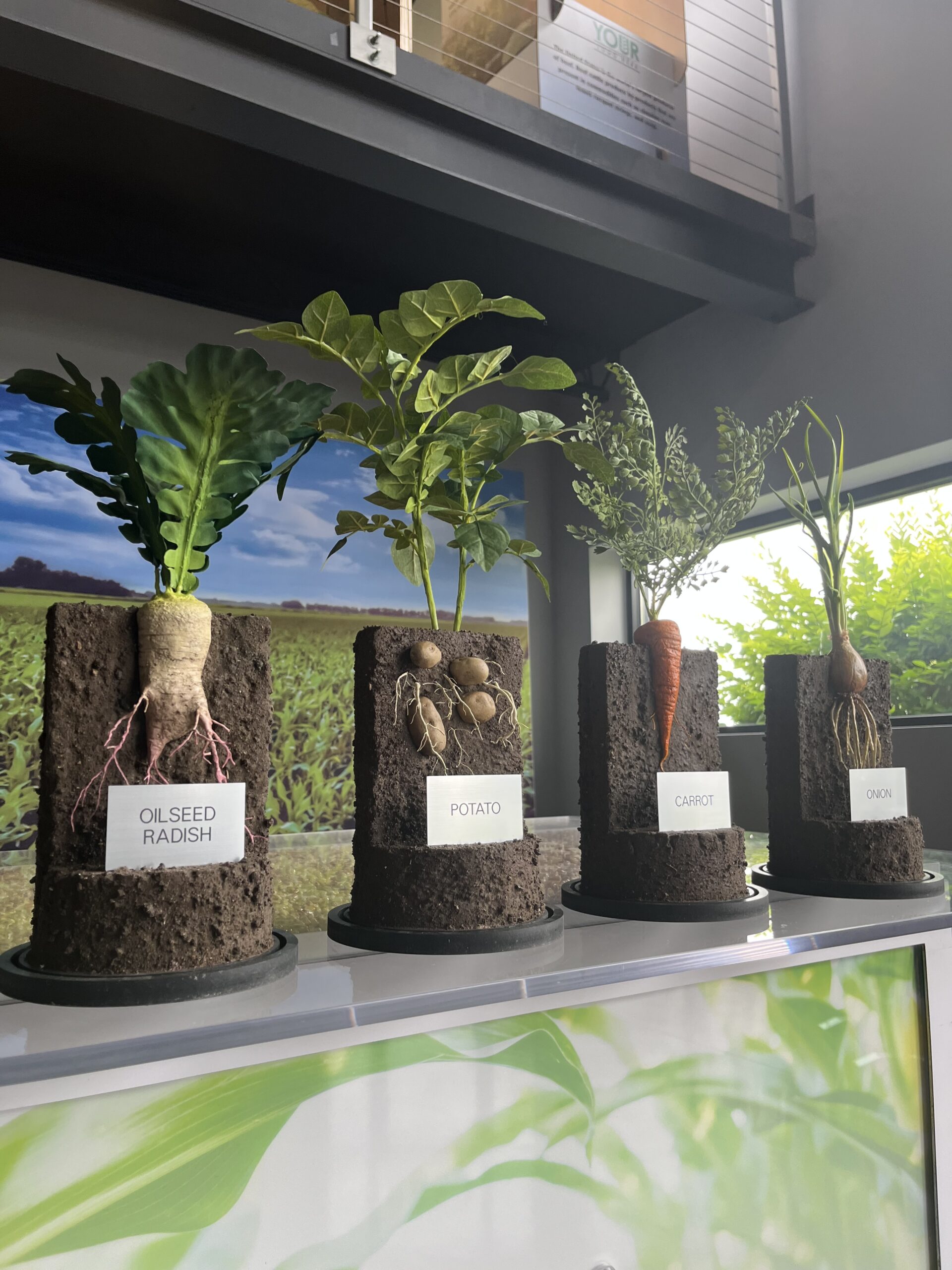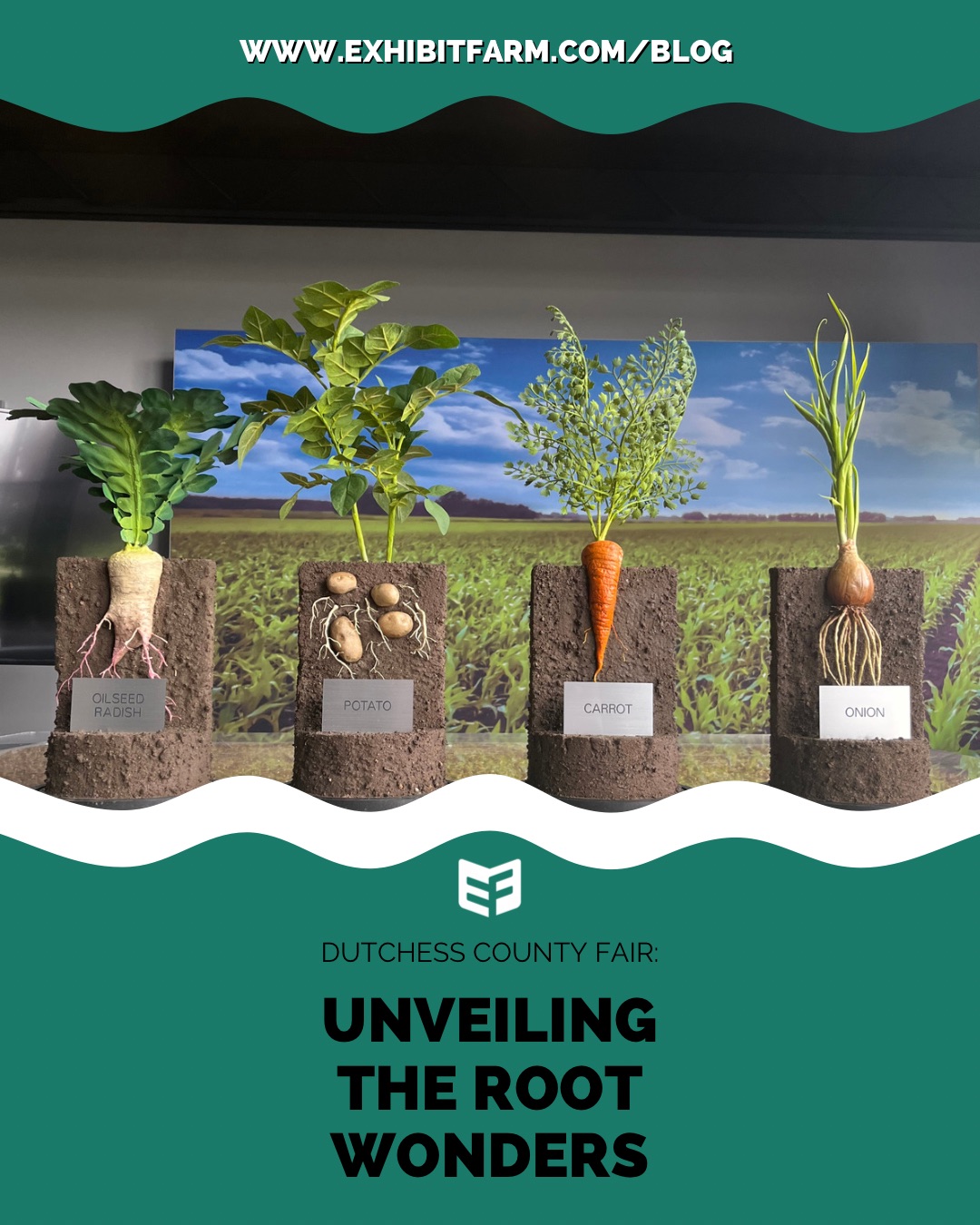
The Dutchess County Fair is a celebration of agriculture, horticulture, and community in the heart of New York. In 2023, a unique custom project added a touch of innovation to the fair, captivating the audience with a botanical display that highlighted the diversity of root structures in common crops. The centerpiece of this project was a set of four miniature plant models, each meticulously crafted to showcase the exposed root structures of an oilseed radish, carrot, potato, and onion.
Roots Of Tradition
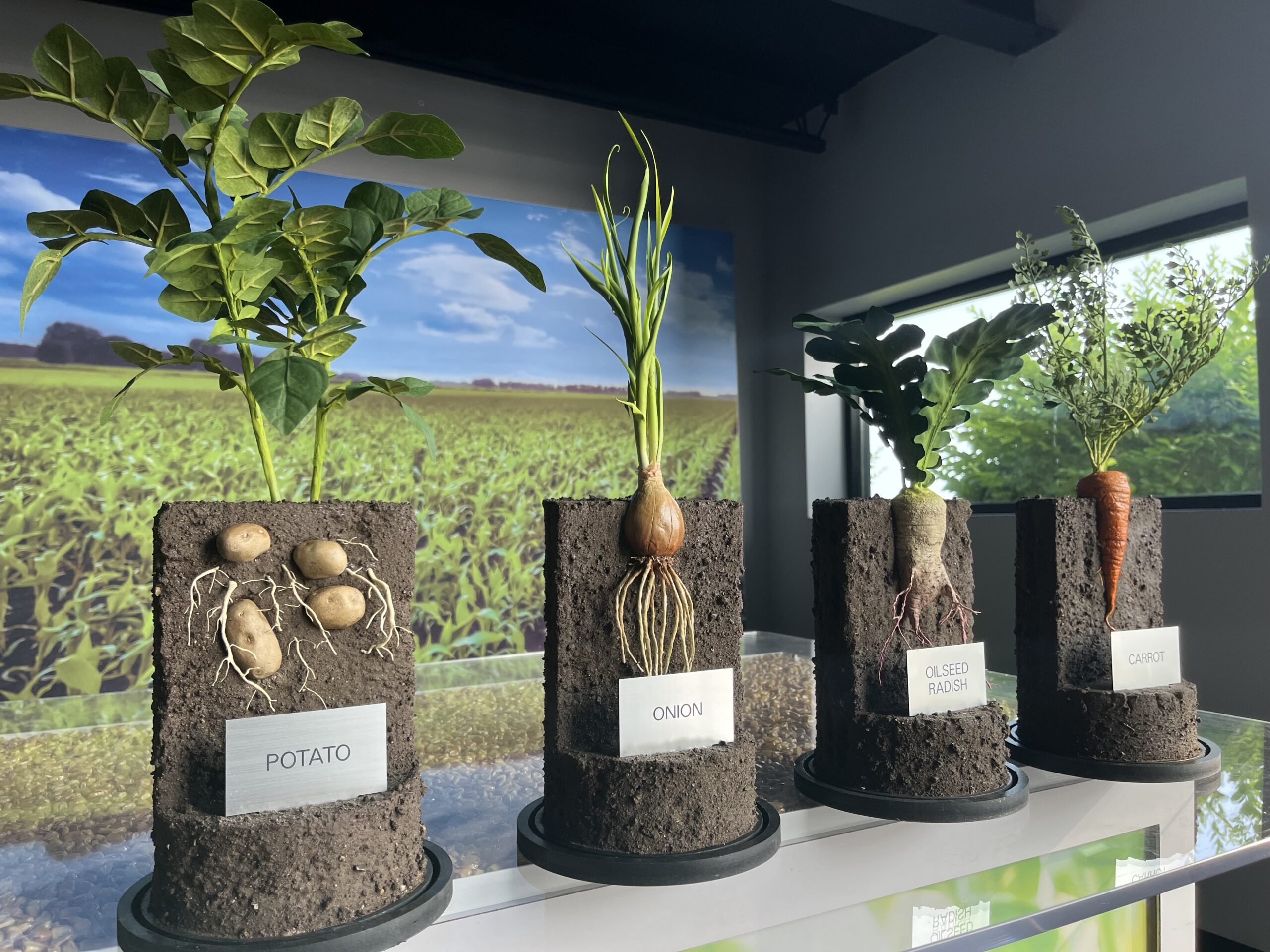
In 1841, the Dutchess County Agricultural Society was established with a $157.00 grant from the New York State Legislature. Its primary objective was to advance agriculture, household manufacturing, and domestic produce. The inaugural official fair took place in 1842 at Washington Hollow, a location later occupied by the NYS police barracks. Subsequent fairs occurred in Poughkeepsie near Mill and Catherine Streets.
By the 1900s, financial difficulties led to the cancellation of the 1916 and 1918 fairs. In 1917, the Poughkeepsie fairgrounds supported war mobilization efforts. In 1919, facing uncertainty, the Society reorganized, relocating to Springbrook Park in Rhinebeck, where the fair has remained.
Weather disruptions and wartime challenges affected the fair’s continuity. The fairs of 1927 and 1928 were canceled due to heavy rains, causing financial strain. The Depression era further impeded growth, and the 1942 fair was canceled due to World War II. Post-war, relief came in 1945, as gas restrictions lifted, bringing financial success to subsequent fairs.
In 2011, Hurricane Irene and an earthquake forced an early closure of the fair. In 1950, the Dutchess County Agricultural Society purchased Springbrook Park, renaming it the Dutchess County Fairgrounds. The facility expanded to 147 acres, witnessing continuous and impressive construction over the years.
Today, the Dutchess County Fairgrounds hosts the largest agricultural six-day fair in New York State, recognized for its beauty. The fairgrounds also accommodates various off-season events, such as Crafts Shows, Classic Car Shows, Antique Shows, a Sheep and Wool Festival, Wine and Food Festival, and numerous livestock shows. Industry insiders hail the Dutchess County Fair as the best six-day fair in the country.
For more information about The Dutchess County Fair and the history visit their website!
The Concept
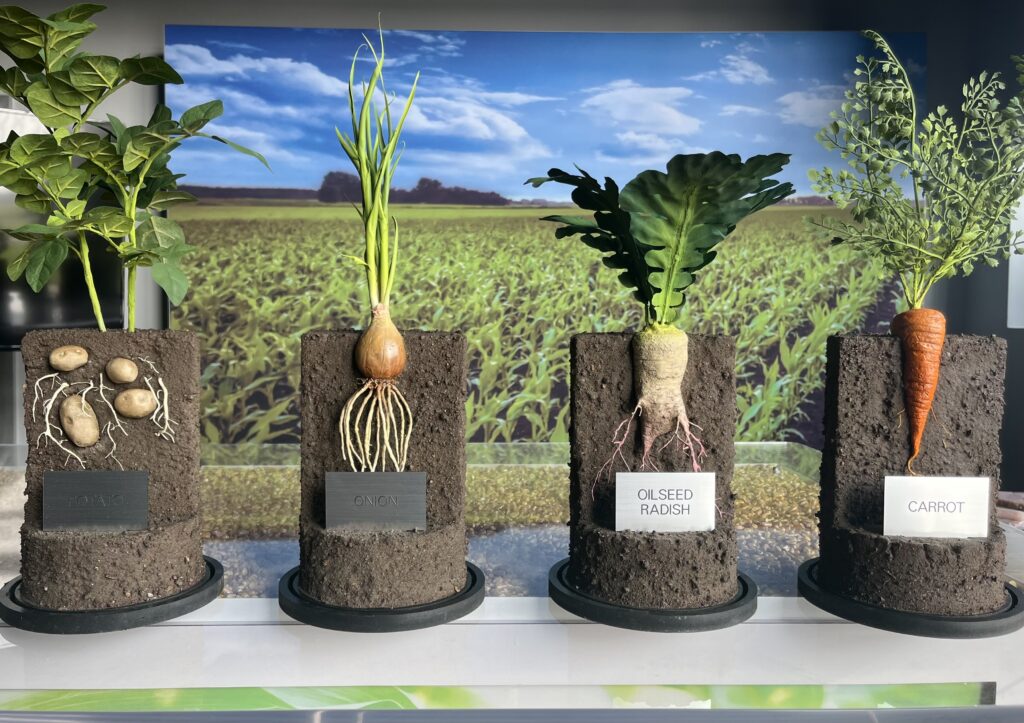
The idea behind this custom project was to offer fair attendees a closer look at the hidden world beneath the soil, where plants establish their foundation and draw sustenance. The four chosen crops represented a range of root structures, reflecting the diversity of agricultural produce in Dutchess County.
Oilseed Radish
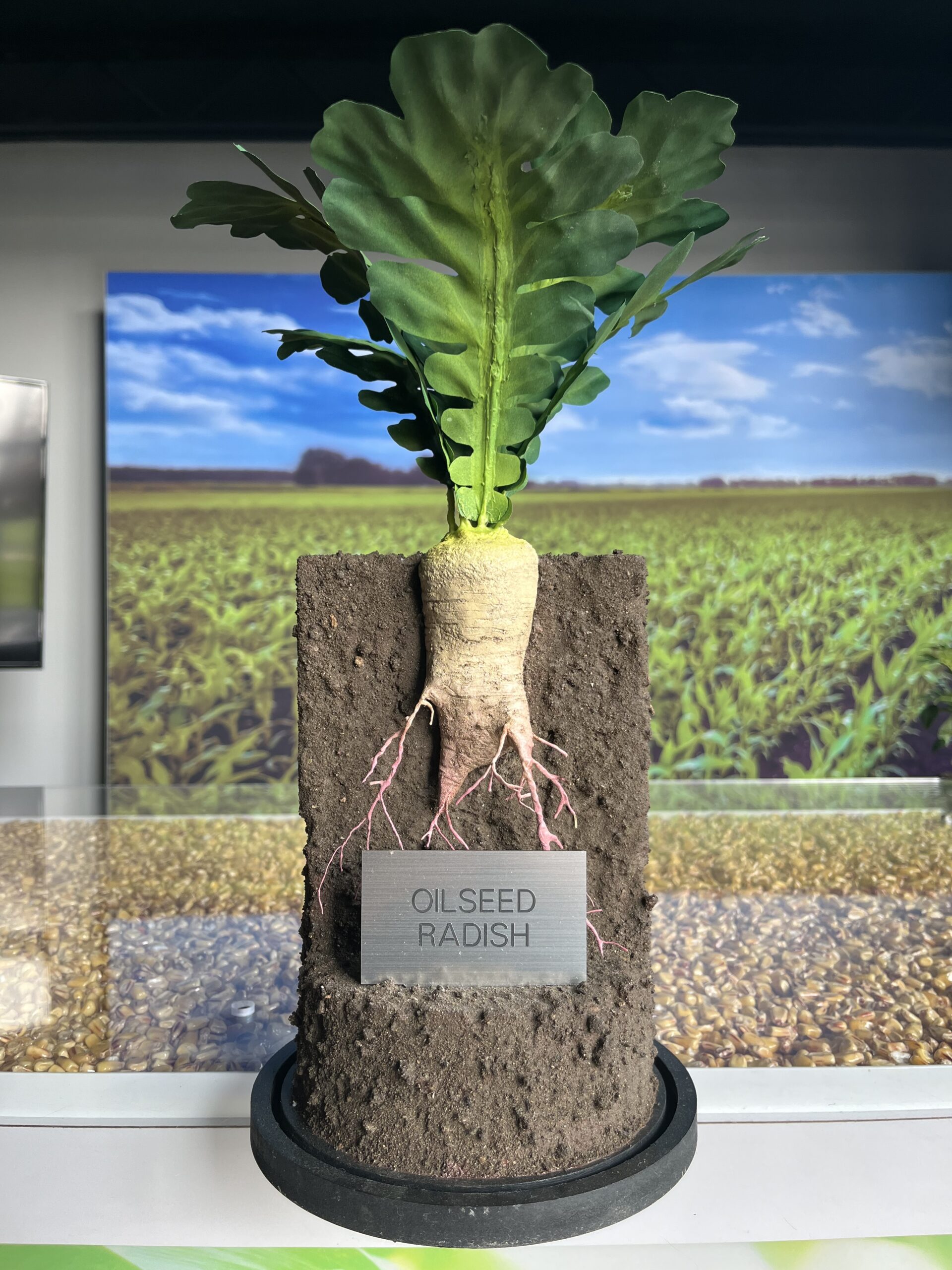
Oilseed radish, scientifically known as Raphanus sativus or R. sativus var. Oleiferus, is a mustard variety initially cultivated for oil production. Its primary use is in Canada, and it is increasingly adopted as a cover crop in various regions of Michigan. This particular radish species demonstrates rapid establishment and growth, particularly thriving in cooler weather conditions.
The oilseed radish model revealed a taproot system, diving deep into the soil. This plant not only helps break up compacted soil but also stores nutrients for future crops. The intricate detailing of the radish root system provided fairgoers with insights into the vital role of cover crops in maintaining soil health.
For more information on oilseed radish’s click here.
Carrot
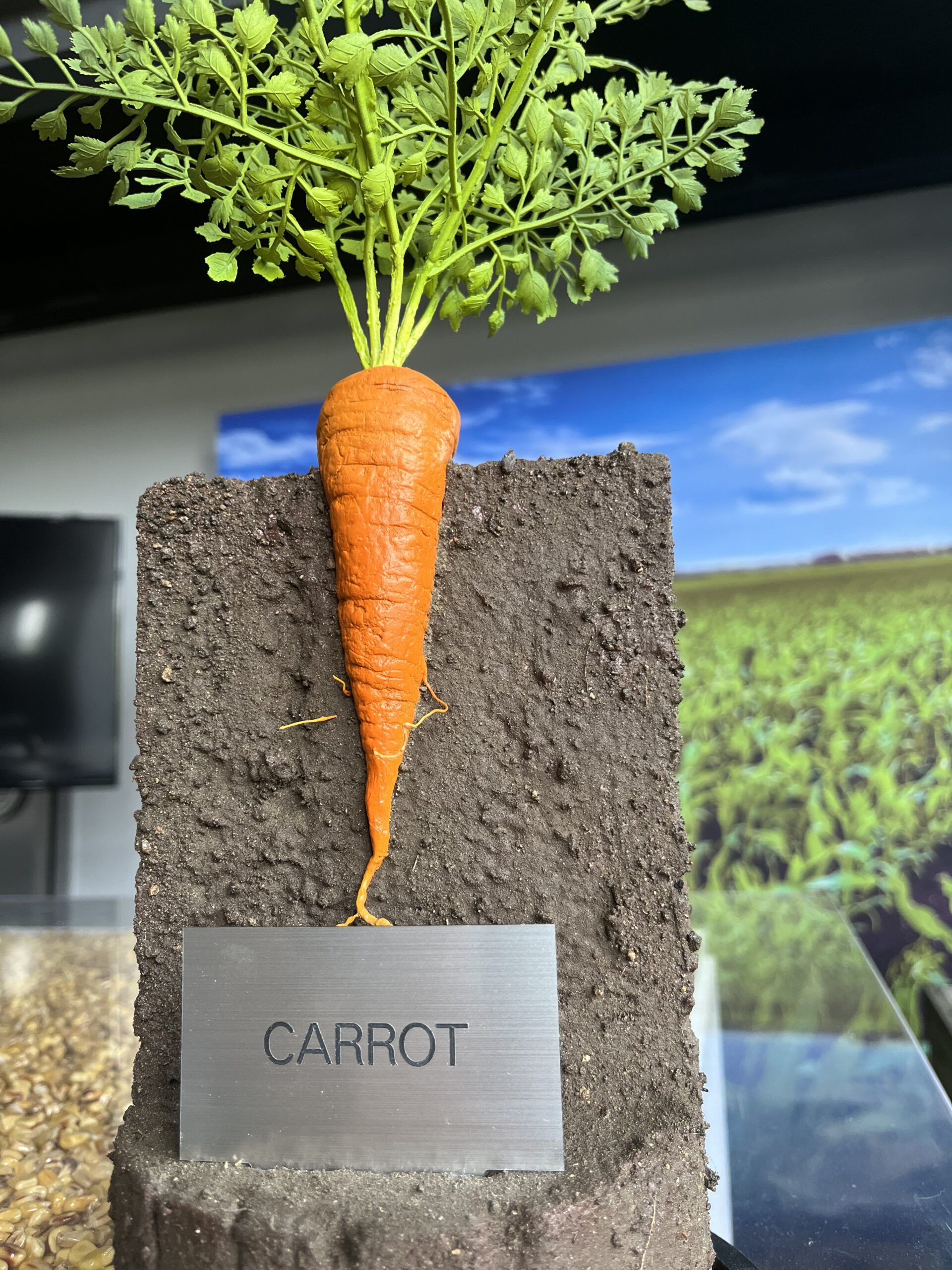
The carrot (Daucus carota subsp. sativus) is a root vegetable, typically displaying an orange hue, although there are heirloom variations such as purple, black, red, white, and yellow cultivars, all derived from the wild carrot, Daucus carota, native to Europe and Southwestern Asia. Believed to have originated in Persia, the plant was initially cultivated for its leaves and seeds. While the stems and leaves are also consumed, the taproot is the most commonly eaten part of the plant. Through selective breeding, domestic carrots have been enhanced to feature a larger, more palatable, and less woody-textured taproot.
Carrots are known for their fibrous root systems, and the custom project highlighted this feature by exposing the intricate network of thin roots. Attendees could observe how carrots anchor themselves in the soil, demonstrating the plant’s adaptability to different growing conditions.
For more information on carrot’s click here.
Potato
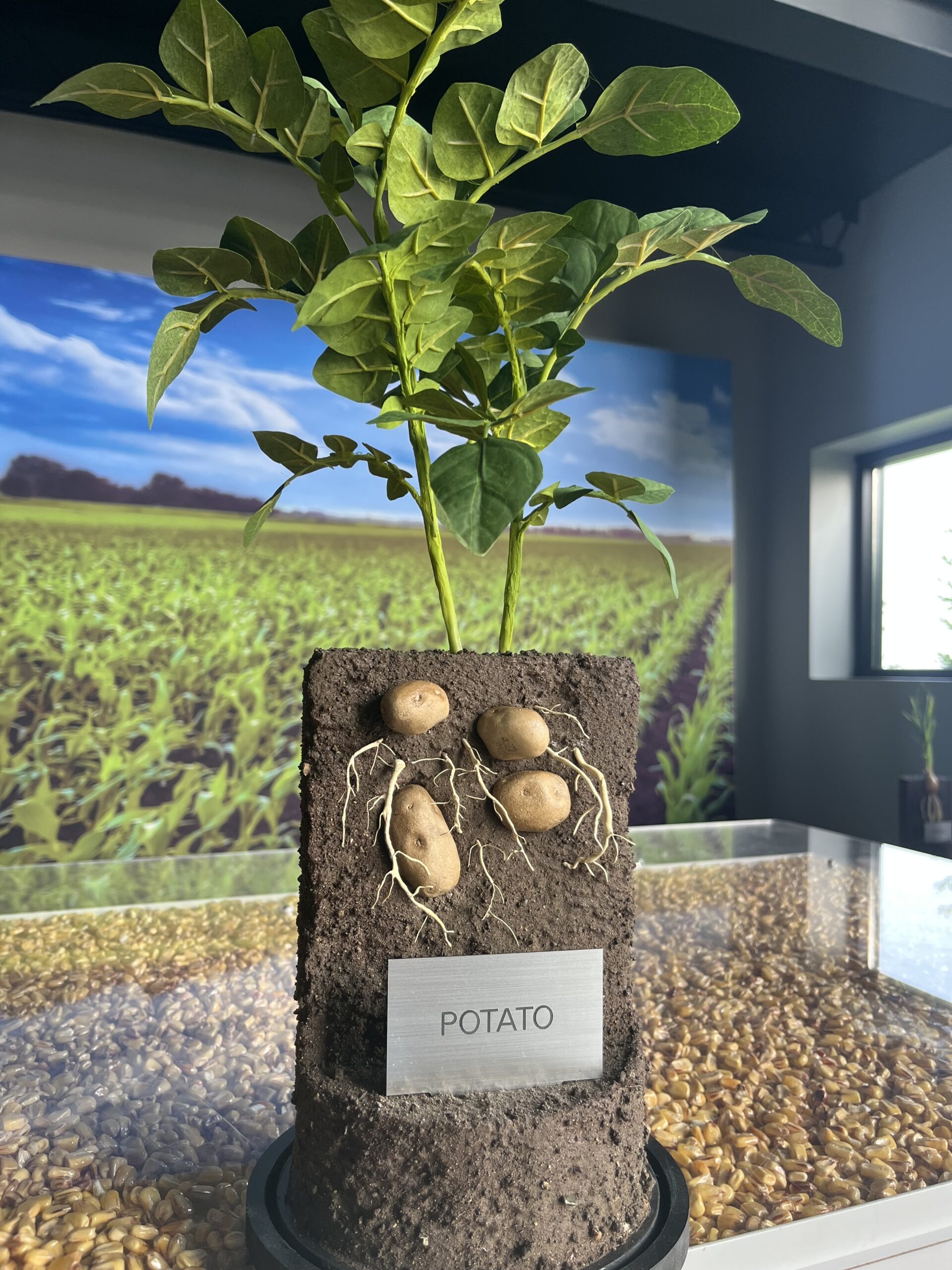
The potato (/pəˈteɪtoʊ/) is a starchy root vegetable with origins in the Americas, serving as a staple food in various regions worldwide. Potatoes are tubers derived from the plant Solanum tuberosum, which is a perennial member of the Solanaceae family.
Wild potato species are distributed from the southern United States to southern Chile. Initially, it was thought that Native Americans independently domesticated the potato in multiple locations. However, subsequent genetic studies revealed a single origin in the present-day southern Peru and extreme northwestern Bolivia. The domestication of potatoes occurred approximately 7,000–10,000 years ago from a species within the S. brevicaule complex. The Andes region of South America, where the species is native, cultivates numerous varieties of potatoes.
The potato model showcased a tuberous root system, emphasizing the importance of underground storage organs in sustaining the plant. This representation underscored the role of potatoes as a staple crop and demonstrated the resilience of these plants in storing energy for future growth.
For more information on potato’s click here.
Onion
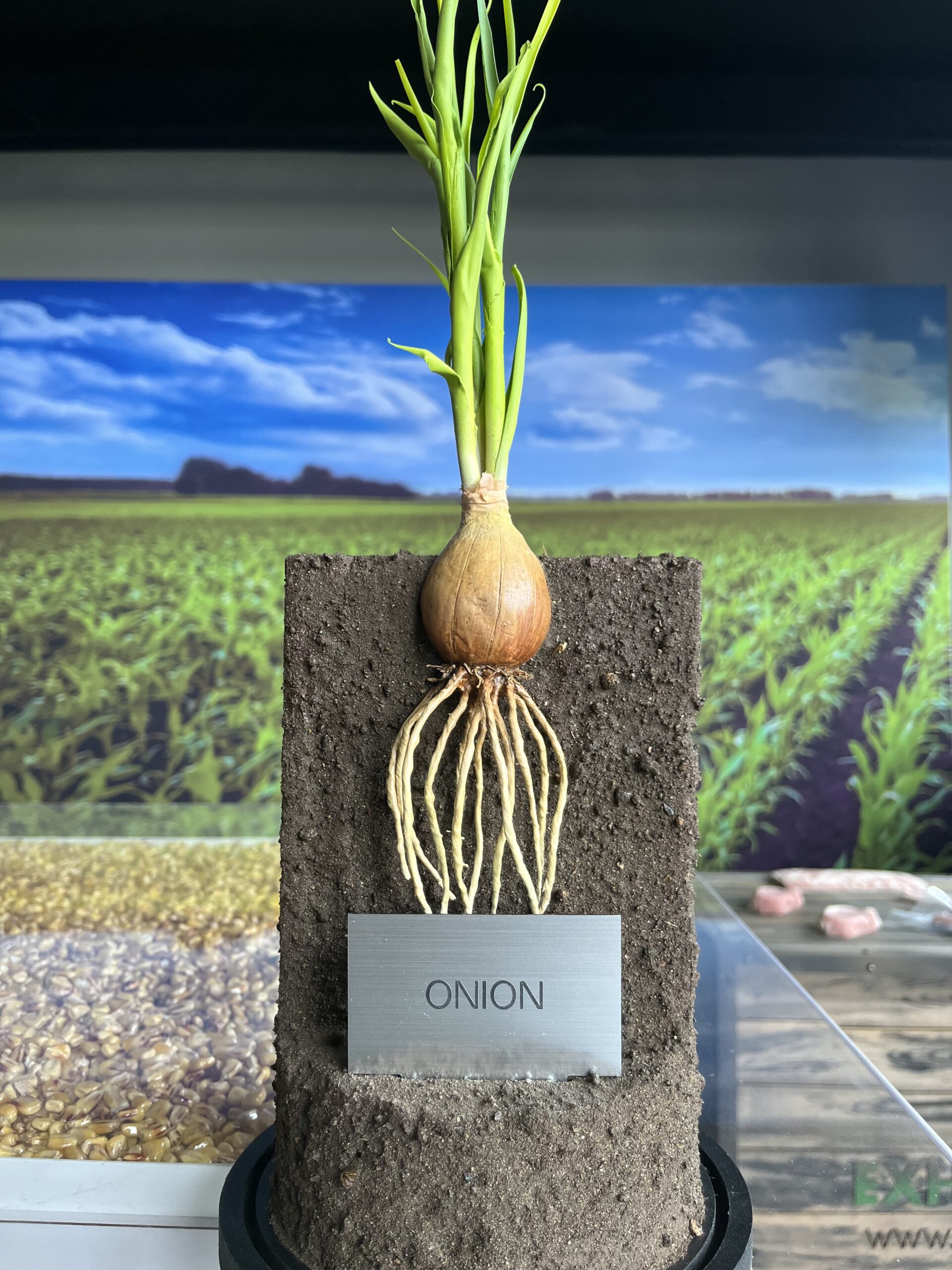
An onion (Allium cepa L., derived from the Latin term cepa meaning “onion”), also referred to as the bulb onion or common onion, is a vegetable and the most extensively cultivated species within the Allium genus. The shallot, previously considered a separate species, was reclassified as a botanical variety of the onion in 2011. Related members of this genus include garlic, scallion, leek, and chive.
The onion plant features a fan of hollow, bluish-green leaves, and its bulb, situated at the plant’s base, begins to enlarge when a specific day-length is attained. The bulbs consist of compressed, shortened, underground stems enclosed by fleshy modified scale leaves, enveloping a central bud at the stem’s tip. In the autumn (or spring for overwintering onions), the foliage withers, and the outer layers of the bulb become drier and more brittle. The harvest involves drying the crop, making the onions suitable for use or storage. The crop is susceptible to various pests and diseases, including the onion fly, onion eelworm, and fungi that may lead to rotting. Certain A. cepa varieties, such as shallots and potato onions, yield multiple bulbs.
The onion model focused on the bulb and fibrous root system, illustrating how onions draw nutrients and water from the soil to nourish the above-ground bulb. This part of the exhibit provided an educational experience about the role of root systems in supporting the growth and development of edible crops.
For more information on onion’s click here.
Artistic Detailing
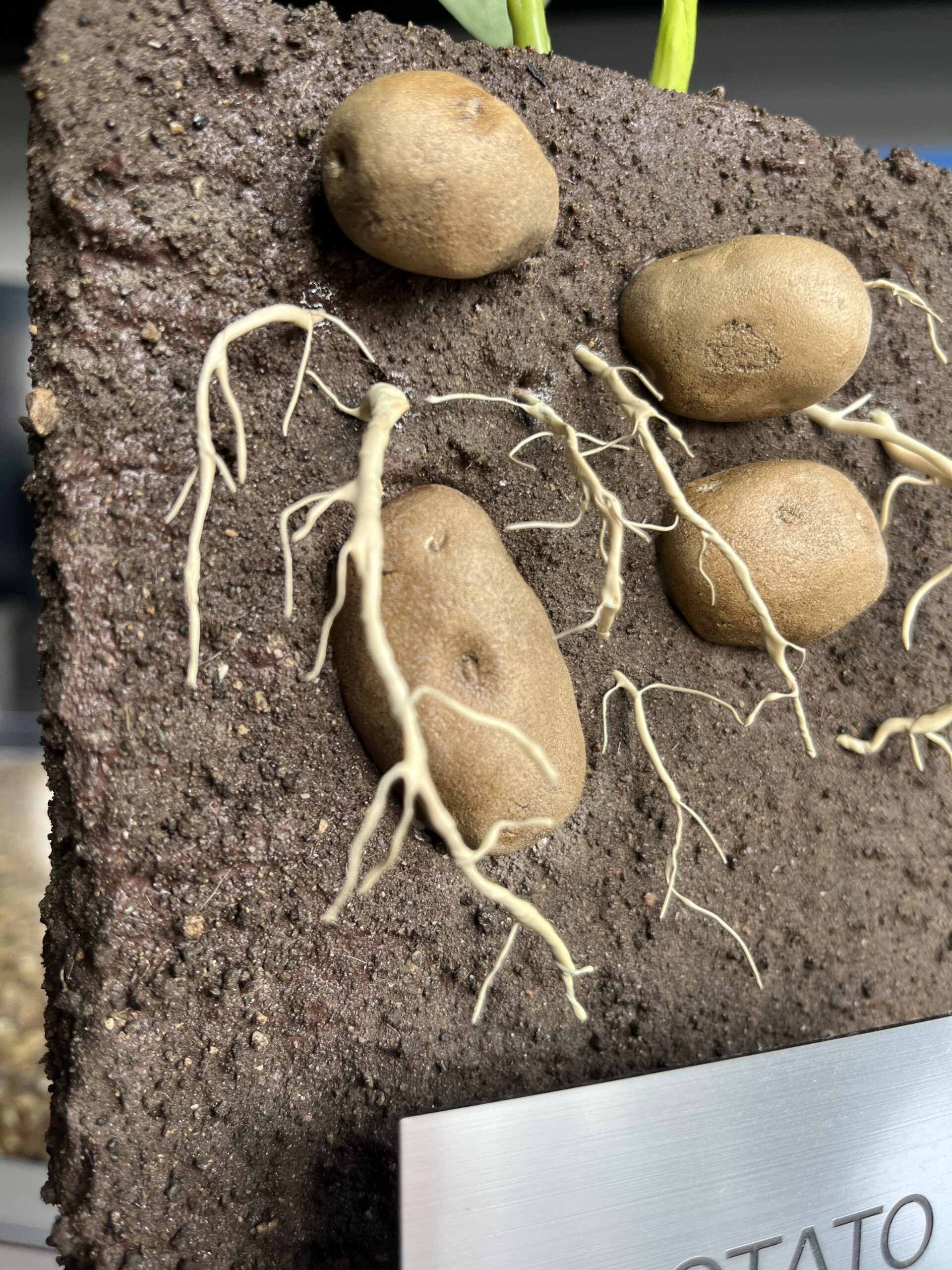
The attention to detail in crafting the miniature plant models was a testament to the skill and dedication of the project team. Simulated soil, meticulously textured and colored, surrounded each model, creating a realistic and immersive display. The careful selection of materials ensured that the root structures were accurately represented, contributing to the educational value of the exhibit.
Harvesting Memories

The custom project at the Dutchess County Fair successfully combined artistry and education, offering attendees a unique perspective on the often overlooked but vital aspect of plant life—the root system. By showcasing the diversity of root structures in common crops, the exhibit celebrated the rich agricultural heritage of Dutchess County and fostered a greater appreciation for the intricate world beneath our feet.
View our Oilseed Radish on our catalog product page! See more cover crops and artificial plants on our website!
